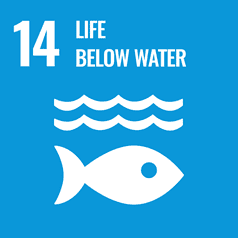
Conservation research saving Australia's frogs
University of Newcastle researchers have spent nearly three decades developing innovative solutions and world-first discoveries aimed at saving Australia’s threatened frog species.
Infectious diseases, invasive species, habitat destruction and climate change are the greatest threats to global biodiversity. These changes are having a massive impact on our frogs, with more than one-third of the world's 7,500 frog species in danger of extinction.1
Australia has around 250 known frog species, with many of them found nowhere else in the world. We’ve already lost nearly 10 species and researchers estimate another 45 are at risk.
Frogs are considered an indicator species, which means their decline signifies larger environmental issues. When species go extinct, entire ecosystems are disrupted.
Traditional conservation programs such as translocations typically fail because the threats remain present or establish in translocation sites. They also don’t stop at boundaries of national parks, reserves or other conservation areas.
University of Newcastle researchers have made several world-first discoveries that offer new hope for Australia’s much-loved frogs.
Research impact
Using assisted reproductive technologies to buy time for at-risk species
Using cryopreservation techniques that allow for preserving genetic diversity, and if required, cloning, researchers separated, isolated and froze the embryonic cells of an Australian Ground Frog in 2013.
It was the first time anyone had successfully used slow-freezing techniques on amphibian sperm and embryonic cells. The technique served as an insurance policy to buy time for species on the edge of extinction, as researchers continued to look for answers to diseases and other threats.
A decade later, researchers from the University’s Centre for Conservation Science improved on the original discovery and developed a superior method of freezing and thawing frog sperm, which also led to better sperm quality.
The team found that using less sucrose in the freezing process facilitates higher cell recovery, which results in more intact membranes and sperm motility. Sperm was tested from six frog species, and in all cases the new thawing method was found to be superior to the traditional cryopreservation method.
The research was published in the world-renowned journal Reproduction and offered fresh hope for frog conservation efforts.

Recreating habitats in the face of devastating bushfires
Australia’s Black Summer Bushfires in 2019 decimated the habitats of several frog species.
The University and the NSW Department of Climate Change, Energy, the Environment and Water joined forces to co-design and inform on-ground conservation efforts to assist in the recovery of amphibian populations.
The approach ensures conservation actions are both practical for the land manager and provide the greatest assurance for species recovery.
Olney State Forest near the Central Coast of NSW is now home to a series of artificial ponds that have become breeding habitats for iconic species such as the Littlejohn's Tree Frog and the Giant Burrowing Frog. The habitats also serve to provide climatic refuge for many other forest fauna.
Using citizen science to save threatened species
In 2021, University researchers enlisted ‘citizen scientists’ to investigate threats to five threatened frog species in protected habitats: the Stuttering Frog, Littlejohn’s Tree Frog, Davies’ Tree Frog, the Glandular Tree Frog and the Giant Burrowing Frog.
As part of a three-year project, local residents and community groups help monitor auditory data loggers known as AudioMoths, which are placed near known frog populations to record their calls. Volunteers take AudioMoths to designated sites and retrieve data every six weeks or so, which is then shared with University researchers.
The approach helps measure the frogs’ response to multiple threats, including water pollution, invasive fish and the fungal disease chytrid.
The project has involved 8,000 online citizen scientists who have helped researchers identify various threatened frog species in the Blue Mountains, the Watagans, Barrington Tops, Dorrigo and the New England regions.
Captive breeding success
In 2025, the researchers achieved a major breakthrough in the conservation of the Littlejohn's tree frog, by successfully breeding the endangered species in captivity for the first time.
These breakthroughs build on a series of earlier achievements by University of Newcastle research teams:
- In a world-first, researchers helped revive and reactivate the genome of an extinct Australian frog using sophisticated cloning technology, which was named one of TIME magazine’s 25 Best Inventions of the Year in 2013. The work was led by Emeritus Professor Michael Mahony, who has devoted his working life to the conservation of Australia’s most vulnerable amphibian.
- University of Newcastle researchers discovered that pool salt could be the key to stopping chytrid disease – a highly infectious disease that attacks the keratin in a frog’s skin, disrupts the flow and levels of electrolytes, and eventually causes a heart attack. They found a 70 percent increase in survival rates when inland frogs were translocated into habitats where small amounts of salt were added to the water during winter. This research delivered the first viable, widely accessible and cost-effective treatment option for chytrid in the wild.
- Thanks to a captive breeding program run by our researchers and industry partners, Kooragang Island is now home to a new generation of Green and Golden Bell frogs – species that hadn’t been seen in large and sustainable numbers for nearly two decades.
1NSW Environment & Heritage (2024)
last updated September 2025
Saving the Frogs 3:27
Hear from Professor Mahony on the importance of frogs to our environment.
The University of Newcastle acknowledges the traditional custodians of the lands within our footprint areas: Awabakal, Darkinjung, Biripai, Worimi, Wonnarua, and Eora Nations. We also pay respect to the wisdom of our Elders past and present.



